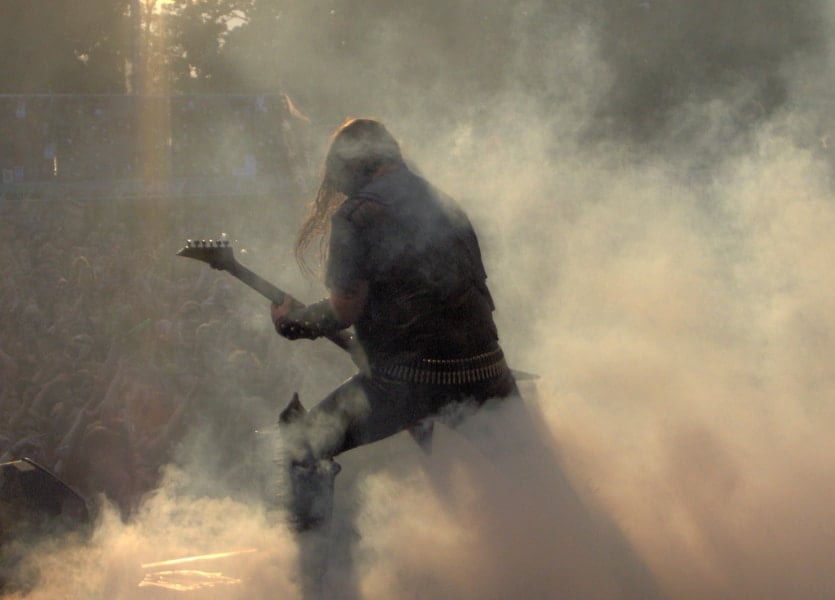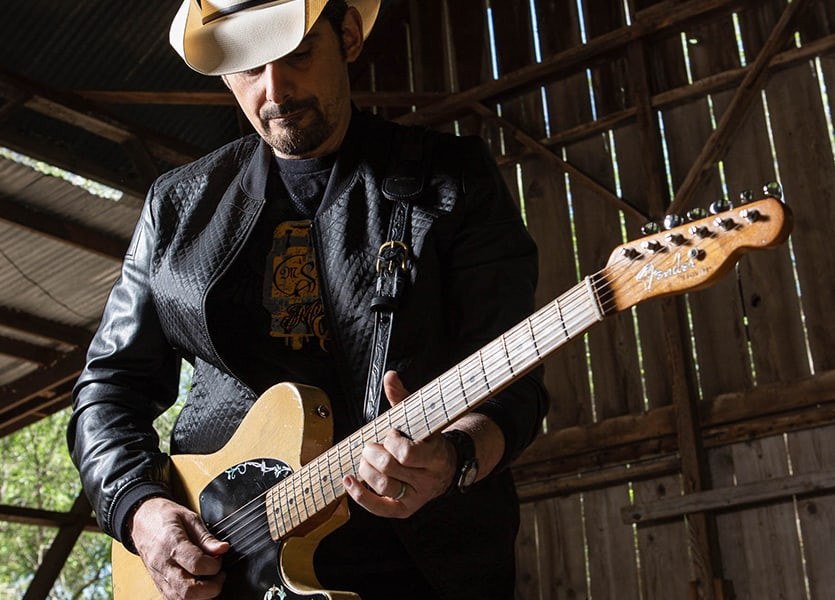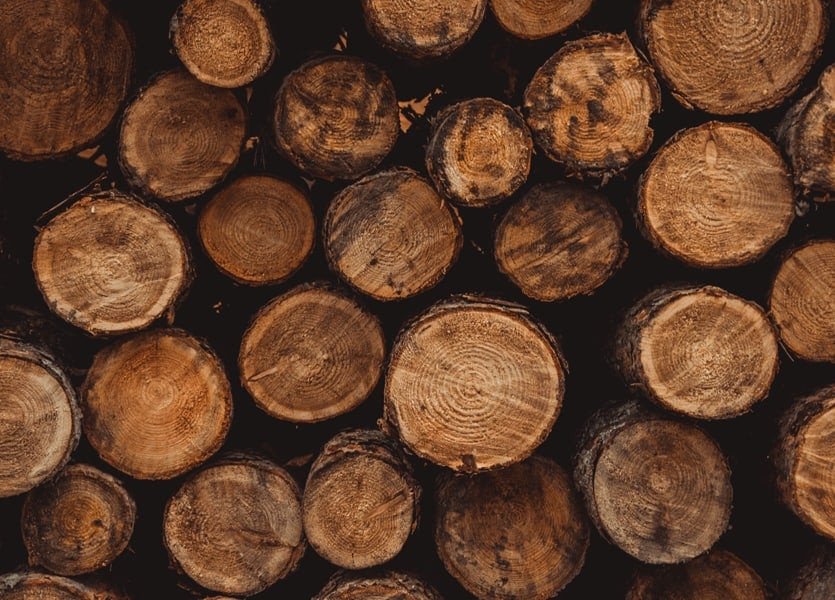Describing a guitar’s sound involves understanding the nuances of tone, and at guitarplayers.net, we help guitarists of all levels articulate these sonic characteristics. By learning to effectively describe a guitar’s tone, you enhance communication with fellow musicians and fine-tune your gear choices to achieve your ideal sound. Mastering guitar terminology is essential for every guitar player to help improve their overall music experience.
1. What Does “Bloom” Mean in Guitar Tone?
“Bloom” refers to the amplified sound of certain guitars, like Les Pauls, increasing in tonal complexity as a note or chord is sustained with distortion. This effect can also describe the softened attack of a tube amp experiencing voltage sag.
Think of Peter Green’s work with John Mayall or Carlos Santana’s 70s edge-of-feedback tone. These guitarists showcase “blooming” tones where sustained notes evolve and become harmonically richer. Alternatively, in tube amps, “bloom” describes a violin-like attack caused by voltage sag, creating a dip in volume followed by a sustained note with additional harmonics. This phenomenon is a sought-after characteristic in vintage amps and certain modern designs.
2. What is a “Boomy” Guitar Sound?
A “boomy” guitar sound is an unpleasant low-end buildup caused by speaker resonances, old strings, improper microphone placement, or extreme EQ settings. These tones are typically found in the 100-200Hz range.
Boominess can muddy your guitar’s clarity, making it difficult to distinguish individual notes. It’s crucial to address this issue with proper EQ adjustments, updated strings, and careful attention to your amp and speaker setup. According to audio engineers at Berklee College of Music, effective room treatment and microphone placement are essential for minimizing boomy frequencies and achieving a balanced sound.
3. How Would You Describe a “Brutal” Guitar Tone?
“Brutal” describes a guitar tone with a high potential for playing aggressive, headbanging riffs, often associated with metal music.
Examples of “brutal” guitar tones include the mid-scooped “California Smile” sound of thrash legends Exodus and Metallica, Wes Borland’s down-tuned nu-metal crunch with Limp Bizkit, and the articulate, high-gain 8-string tones of Periphery’s Mark Holcomb. These tones emphasize aggressive distortion, clarity, and impact. The term is often used when discussing metal and related subgenres, where the guitar’s sound is meant to be powerful and imposing.
 Brutal Guitar
Brutal Guitar
4. What is “Chime” in Guitar Tone?
“Chime” is the ear-tingling upper-midrange sensation that occurs when low-gain pickups with Alnico magnets meet the harmonic crunch of British-voiced amplifiers like the Vox AC-30 and non-master volume Marshalls, particularly with 12-string guitars.
“Chime” differs from “sparkle,” which emphasizes treble sheen. Chime focuses on the harmonic richness and clarity in the upper midrange. This sound is often favored in genres like indie rock, jangle-pop, and classic rock, where a bright, clear, and articulate tone is desired. The use of Alnico magnets in the pickups contributes to the warmth and clarity of this sound.
5. What Does “Chug” Mean in Guitar Playing?
“Chug” is the aggressively saturated and percussive sound of a guitar’s low strings played with a palm-muting technique at high gain, commonly associated with heavy metal and its subgenres.
The “chug” sound is fundamental to many metal genres, providing the rhythmic backbone for aggressive riffs. To achieve this sound, guitarists often use high-gain amplifiers and distortion pedals, along with precise palm-muting techniques to create a tight, impactful tone. Bands like Meshuggah and Lamb of God are well-known for their innovative use of “chugging” in their music.
6. What is “Grunt” in the Context of Bass Guitar?
“Grunt” is the mid-forward sound of a slightly to moderately overdriven bass guitar, popularized by players like Green Day’s Mike Dirnt, David Wm. Sims of The Jesus Lizard, Faith No More bassist Billy Gould, and Bob Weston of Shellac.
A bass sound with “grunt” typically has less low-end below 100Hz and treble frequencies above 2kHz, focusing instead on fundamental harmonics in the 200-400Hz range and the growling upper-midrange pick attack between 800Hz-1.2kHz. This clanging, percussive timbre allows the bass to stand out in a mix filled with fuzzy, multi-tracked guitars and heavy drumming. This sound is particularly effective in genres like punk rock, alternative rock, and noise rock.
7. How Can You Recognize “Honk” in a Guitar’s Tone?
“Honk” is a nasally distorted guitar sound with an abundance of midrange frequencies between 800Hz-1kHz. This can be desirable or undesirable depending on the instrumentation and mix.
Speaker and cabinet resonances may also emphasize these frequencies. The presence of “honk” can be influenced by the use of a wah pedal. The term is often used to describe a very focused and sometimes harsh midrange tone that can either cut through a mix or sound unpleasant, depending on the context. Experimenting with EQ can help manage and shape this frequency range.
 Honk Guitar
Honk Guitar
8. What is “Jangle” in Guitar Tone?
“Jangle” is a compressed and treble-boosted clean (or edge-of-breakup) guitar sound, typically using a 12-string guitar and an EL34-equipped amplifier, as heard in upbeat guitar pop groups of the 60s-80s, like The Byrds, R.E.M., and The Beatles.
The “jangle” sound is characterized by its bright, ringing quality, often created by the doubling effect of the 12-string guitar and the harmonic richness of EL34 tubes. This sound is commonly used in genres where a cheerful, vibrant guitar tone is desired, contributing to the overall bright and airy feel of the music. Compressors and treble boosters enhance the sustain and clarity of the sound.
9. What Does it Mean When a Guitar Sound is “Open?”
An “open” guitar sound is one where the amplifier has clean headroom to spare with a light touch but can be pushed into overdrive with little more than a heavy picking hand. It’s the opposite of a compressed sound.
With an “open” guitar sound, the player’s choice of strings, pickups, and pedals can drastically alter the amplifier’s dynamic range. This type of sound is highly responsive to the player’s technique, allowing for a wide range of expression. It’s favored by guitarists who want a versatile sound that can go from clean to overdriven with minimal changes to their gear.
10. What Defines a “Rude” Guitar Tone?
A “rude” guitar sound is a fuzz guitar characterized by odd-order harmonics and a stiff top-end response. In some cases, this may include the gated, “zippery” tone of a voltage-starved fuzz pedal running on a dying battery.
Notable examples of “rude” guitar tones include Ron Asheton on The Stooges’ “I Wanna Be Your Dog” and Mudhoney’s album Superfuzz Bigmuff. These sounds are often raw, aggressive, and unconventional. The use of dying batteries or voltage-starved pedals can create unpredictable and chaotic tones that add to the “rude” character.
11. What is the “Quack” Sound in Guitar?
The “quack” sound refers to the distinct tone of a Stratocaster when the pickup selector is in position two or four. It’s produced when two parallel-wired single-coil pickups are used in conjunction with a clean amp tone.
Think of Mark Knopfler on Dire Straits’ “Sultans of Swing.” The “quack” sound is known for its scooped midrange and clear, bell-like quality. This is achieved by the phase cancellation that occurs when the two pickups are combined, creating a unique and recognizable tone. It’s a favorite among guitarists who appreciate its versatility and clarity.
12. How Would You Describe “Shimmer” in Guitar Tone?
“Shimmer” in guitar-speak refers to the harmonically rich sound of a clean guitar with a stereo time-based effect, typically reverb or chorus.
In a contemporary context, “shimmer” describes a reverb where harmonics are introduced to the wet signal via pitch-shifter or subtle distortion—such as the Dark Sun’s “Saturation” control—to produce a reverb effect with an unmistakable sparkling sustain. In vintage terms, “shimmery” guitar sounds are often associated with single-coil pickups and solid-state amps like the Roland Jazz Chorus. The key is the lush, ambient quality that adds depth and texture to the guitar’s sound.
13. What is Meant by “Sparkle” in Guitar Tone?
“Sparkle” is the crystalline treble sheen of a germanium fuzz pedal paired with a single-coil equipped guitar with the volume rolled back, typically in the 4-6kHz range, unlike “chime,” which is about upper-midrange harmonics.
Players like Jimi Hendrix and John Frusciante use this technique to great effect, manipulating the Stratocaster’s volume control to fade seamlessly from quacky rhythm tones into searing lead sounds without turning off the fuzz pedal. The “sparkle” sound is bright, clear, and often used to add a touch of brilliance to the guitar’s tone without becoming harsh. It’s a favorite for adding clarity and definition to solos and melodic lines.
 Sparkle Guitar
Sparkle Guitar
14. What is “Twang” in Guitar Terminology?
“Twang” is the iconic sound of country music, often achieved with a Telecaster, compressor, and Twin Reverb amplifier.
A twangy guitar sound is frequently associated with country music. Modern players like Brad Paisley have introduced overdrive and distortion to the mix, relying on his signature La Brea Tele Pickups and Dr. Z amplifiers to recreate the snappy bell-tones of a Vox AC-30. Some country styles, like honky-tonk and rockabilly, also use short analog delays to accentuate the hard-driving rhythms.
15. What Does “Woody” Mean in Guitar Tone?
“Woody” refers to the organic, mid-forward earth tones of a vintage-voiced pickup with Alnico magnets paired with a low-wattage amplifier and Greenback speakers.
Woody guitar sounds have a powerful bassy thump on the low strings and a throaty, viscous midrange. The “woody” sound is often described as warm, natural, and resonant, reminiscent of the acoustic properties of wood. It’s favored by guitarists who want a vintage-inspired tone that is both full and articulate. The combination of Alnico magnets, low-wattage amps, and Greenback speakers contributes to this unique tonal quality.
 Woody Guitar
Woody Guitar
FAQ Section: Describing Guitar Tone
1. Why is it important to describe guitar tone accurately?
Accurately describing guitar tone enhances communication among musicians, aids in gear selection, and helps achieve desired sounds.
2. What are the key elements to consider when describing guitar tone?
Consider the frequencies (bass, mid, treble), effects (reverb, distortion), and overall characteristics (warm, bright, aggressive).
3. How do different types of pickups affect guitar tone?
Single-coil pickups often produce a bright, clear tone, while humbuckers offer a thicker, warmer sound.
4. What role do amplifiers play in shaping guitar tone?
Amplifiers significantly shape tone through their design, tubes (or solid-state components), and EQ settings.
5. Can the wood of a guitar influence its tone?
Yes, different woods have different tonal properties; for example, mahogany is warm, while maple is bright.
6. What is the best way to describe a distorted guitar tone?
Use terms like “crunchy,” “fuzzy,” “saturated,” or “aggressive,” and specify the frequencies that stand out.
7. How can I describe a clean guitar tone effectively?
Use adjectives like “clear,” “warm,” “bright,” “chimey,” or “shimmery” to convey the tone’s qualities.
8. How do effects pedals influence guitar tone?
Effects pedals add specific sonic characteristics, such as reverb for space, delay for echo, or chorus for a swirling effect.
9. What are some common terms used to describe bass guitar tones?
Common terms include “punchy,” “warm,” “boomy,” “growly,” and “round,” depending on the desired sound.
10. How can I improve my ability to describe guitar tone?
Listen actively to various guitar tones, experiment with different gear, and practice articulating what you hear using precise language.
Still on the hunt for that elusive perfect tone? At guitarplayers.net, we’re committed to helping you dial in the sound you’ve always dreamed of. Explore our website for lessons, reviews, and a vibrant community of guitar enthusiasts.
Ready to dive deeper? Contact us at Address: 1140 Boylston Street, Boston, MA 02215, United States. Phone: +1 (617) 747-2261. Visit guitarplayers.net today to discover a wealth of resources, connect with fellow musicians, and take your guitar playing to the next level!
